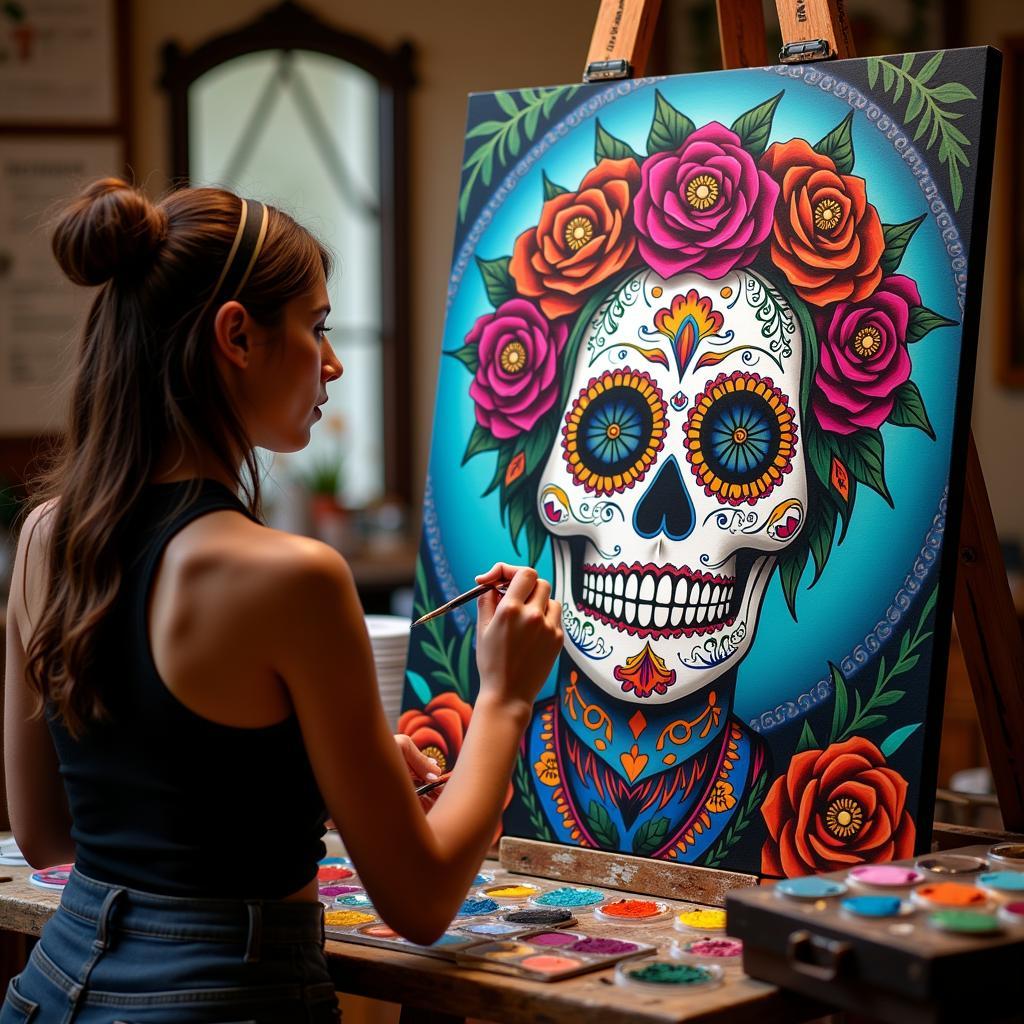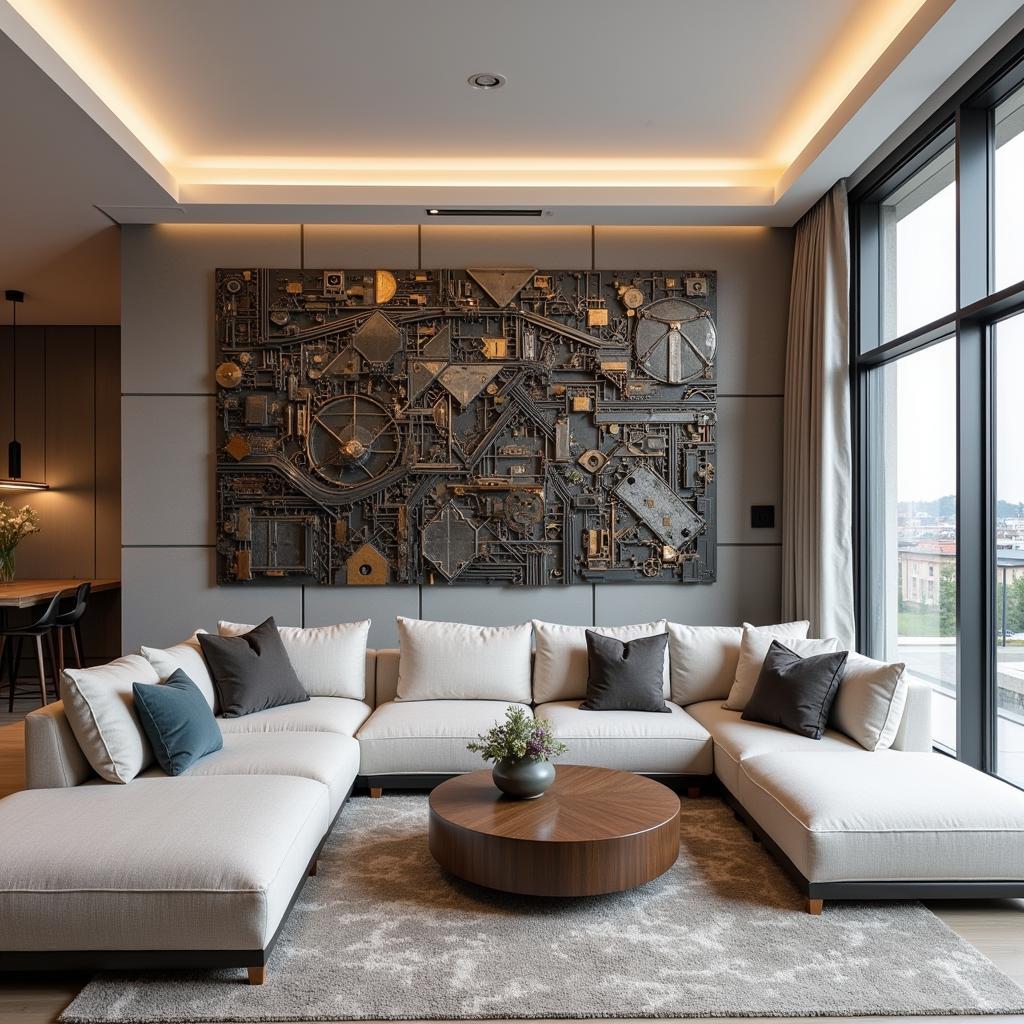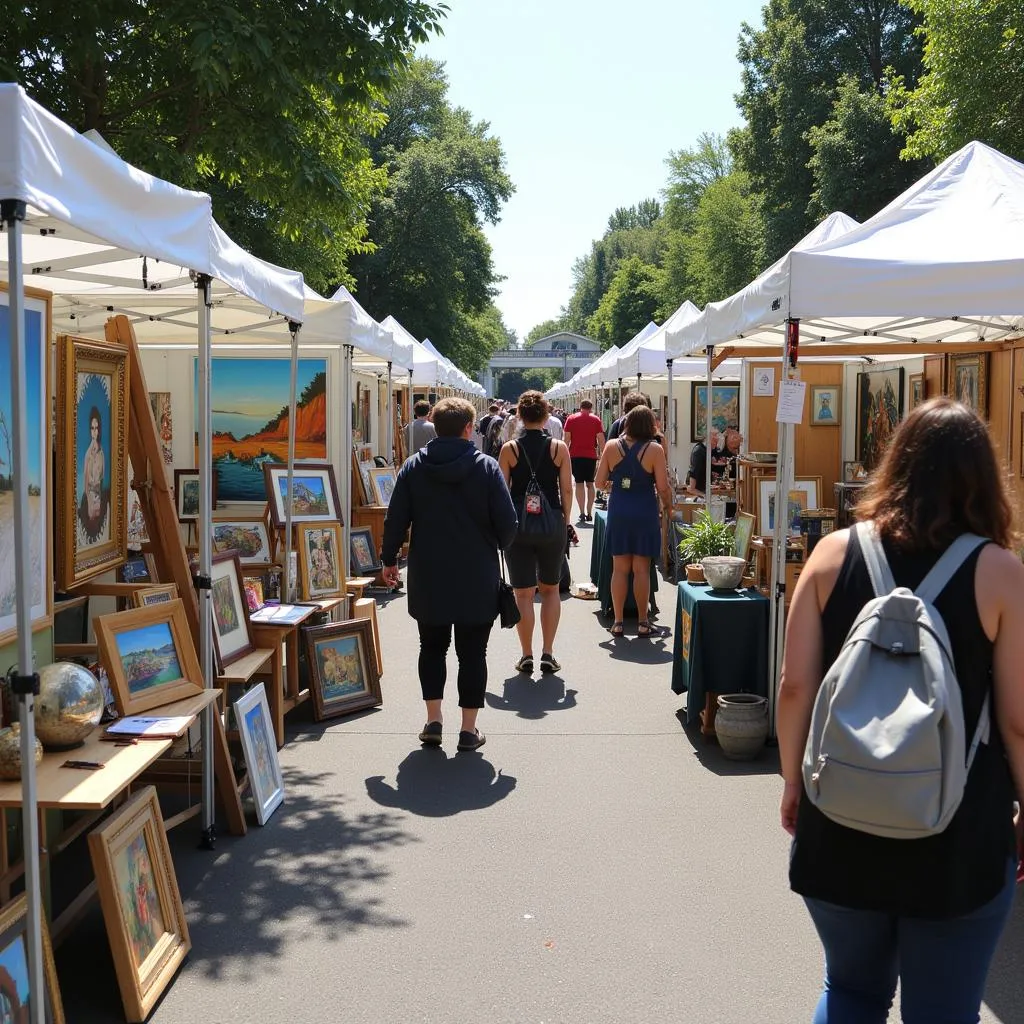Exploring the Vibrant World of Geometric Art Color
Geometric Art Color explodes with a captivating energy, transforming simple shapes into mesmerizing visual experiences. From the bold hues of abstract compositions to the delicate gradients of digital art, geometric art color offers a diverse and exciting realm for artists and art enthusiasts alike. This article delves into the fascinating intersection of geometry, color theory, and artistic expression, exploring its history, techniques, and the endless possibilities it offers for creative exploration. geometric color art
The Power of Shape and Hue: Understanding Geometric Art Color
Geometric art, at its core, relies on the interplay of geometric shapes – lines, circles, triangles, squares, and more – to create visually appealing compositions. Color elevates these forms, injecting them with emotion, depth, and meaning. Whether it’s the stark contrast of black and white or the vibrant symphony of a rainbow palette, color transforms geometric art into a powerful medium of expression.
How Color Influences Geometric Composition
Color can dramatically alter the perception of geometric forms. A warm red square can appear to advance towards the viewer, while a cool blue circle might recede. Complementary colors, like orange and blue, create vibrant contrasts, while analogous colors, such as blue and green, evoke a sense of harmony. Understanding these principles allows artists to manipulate color to create specific moods, highlight certain elements, and guide the viewer’s eye through the artwork.
A Brief History of Geometric Art Color
From the intricate tilework of Islamic art to the bold abstractions of the early 20th century, geometric art color has a rich and varied history. Ancient civilizations used geometric patterns and vibrant colors to decorate temples, mosques, and palaces. The De Stijl movement embraced geometric abstraction and primary colors, while Bauhaus artists explored the dynamic relationship between form and color. These movements laid the groundwork for the modern resurgence of geometric art, where digital tools have opened up exciting new avenues for creative expression.
From Traditional to Digital: The Evolution of Geometric Art
The advent of digital art has revolutionized the creation of geometric art color. Software programs offer artists unprecedented control over color palettes, gradients, and intricate geometric patterns. Digital tools have made it possible to create complex, multi-layered compositions with stunning precision and detail.
Techniques and Tools for Creating Geometric Art Color
Creating geometric art color can involve a variety of techniques and tools. Traditional methods include painting, drawing, and collage. Digital tools, such as Adobe Illustrator and Photoshop, offer a vast array of options for creating intricate designs. Whether you prefer the tactile feel of working with physical media or the precision of digital tools, the possibilities are limitless.
What are the basic tools for creating geometric art? Traditional artists may use rulers, compasses, and protractors to create precise geometric shapes. Digital artists utilize software tools to achieve similar results, offering even greater flexibility and control over the design process.
Mastering Color Theory for Geometric Art
A strong understanding of color theory is essential for creating impactful geometric art. The color wheel, color harmonies, and the psychology of color all play a role in how viewers perceive and interpret the artwork. By understanding these principles, artists can harness the power of color to create specific emotional responses and enhance the visual impact of their compositions.
Geometric Art Color in the Modern World
Geometric art color continues to thrive in the 21st century, influencing everything from graphic design and interior decoration to fashion and architecture. Its clean lines, vibrant colors, and captivating patterns make it a versatile and enduring art form. metal wall art dining room
“Geometric art offers a universal language of visual communication,” says renowned artist and designer, Anya Petrova. “Its ability to evoke emotion through simple shapes and colors is truly remarkable.”
“The beauty of geometric art lies in its simplicity and precision,” adds David Chen, a prominent art critic. “Color elevates these forms, transforming them into powerful expressions of creativity.” framed black and white abstract art
Conclusion
Geometric art color is a dynamic and ever-evolving art form. Its ability to combine the precision of geometric forms with the expressive power of color makes it a captivating medium for both artists and viewers. From traditional techniques to digital innovations, geometric art color continues to inspire and push the boundaries of creative expression. Explore the vibrant world of geometric art color and discover the endless possibilities it offers. chalkboard art supplies
FAQ
- What is geometric art color?
- What are the key elements of geometric art?
- How does color theory impact geometric art?
- What are some common techniques for creating geometric art?
- Where can I find inspiration for geometric art color?
- How can I learn more about color theory?
- What are some examples of famous geometric artists?
Need support? Contact us 24/7: Phone: 02462573573, Email: [email protected]. Visit us at Savico Megamall, 7-9 Đ. Nguyễn Văn Linh, Gia Thụy, Long Biên, Hà Nội 10000, Việt Nam.




